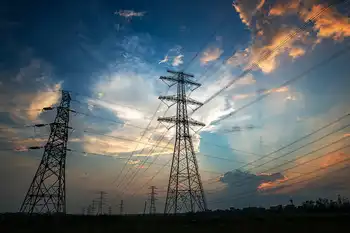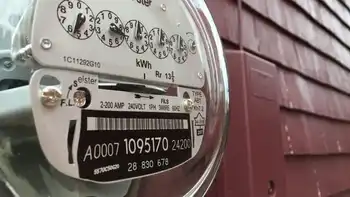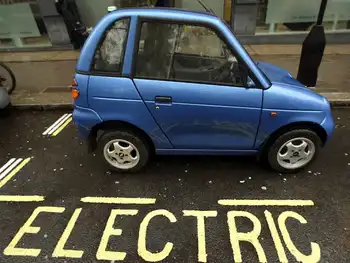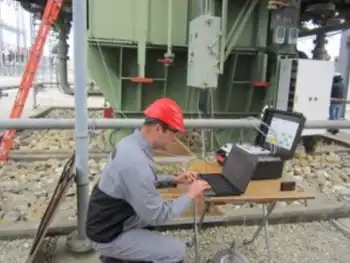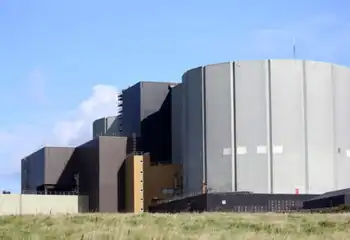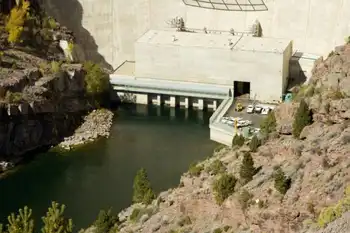New lines go up as grid nears limit
By The Virginian-Pilot
High Voltage Maintenance Training Online
Our customized live online or in‑person group training can be delivered to your staff at your location.

- Live Online
- 12 hours Instructor-led
- Group Training Available
If nothing were done, outages that the system can absorb today could cause rolling blackouts.
Help is on the way. After three years of prep work, the largest transmission line to join South Hampton Roads' power grid since 1985 is about to rise over the countryside.
The project, a two-part addition known officially as the "Carson-Suffolk-Thrasher 500 kV and 230 kV transmission lines," will address the region's capacity problems for the foreseeable future, according to Dominion Virginia Power.
The heavy lifting has only begun. Dominion, which expects to spend at least $223 million on the project, has about 260 easements to negotiate, 700 wooded acres to clear and 330 massive towers to erect and string with cable. If all that goes as planned, the tree-cutting will reach Suffolk by next summer, and someone will flip a switch on the whole thing the following spring.
From there, hundreds of thousands of people in southeastern Virginia will begin to rely on the transmission lines for their homes, their businesses, maybe even their cars. South Hampton Roads pulls much of its electricity from elsewhere because it uses more than it generates, and the demand is growing, said Liz Harper, a senior siting and permitting specialist for Dominion.
"People now have two, three televisions or more," Harper said. "They buy a new refrigerator, they put the old one in the garage."
Dominion's new transmission lines became an official project in early 2006, but company planners began to identify the need years earlier.
Models showed the region's system would fall out of compliance with regulatory standards by summer 2011 - a position that could cost Dominion up to $1 million a day in fines, a company official told the State Corporation Commission of Virginia in 2007.
Peter Nedwick, a Dominion consulting engineer, told the SCC that failure to address the expected shortcomings "could lead to potential rolling blackouts, significantly impacting the region's economy as well as service to critical governmental facilities."
In July 2006, the company began exploring where to build. It winnowed the thousands of potential routes by talking to government officials, holding workshops and looking at variables such as housing densities and wetlands.
The utility avoided one area of the Nottoway River after a property owner told Dominion about a Native American archaeological site there, Harper said.
In 2007, Dominion settled on two possible routes, each of which brought power from the company's Carson substation in Dinwiddie County. Its preferred choice, which ultimately won out, ran into Suffolk along U.S. 460.
The company flew a helicopter over both routes with a laser that recorded a 300-foot-wide swath for engineers to study. That gave them "thousands and thousands" of data points, said Steve Quarberg, a Dominion electric transmission projects manager.
Another survey located all the property lines so Dominion could gather the necessary plats and negotiate with landowners. Dominion will buy some of the property it needs for its 60-mile 500-kV line, but in the vast majority of cases it will try to buy an easement from the owner, Quarberg said.
Those who refuse a deal may face condemnation.
Parts of the 500-kV line will parallel existing lines, reducing the amount of new land that the company needs.
The 230-kV portion of the project, a 21.5-mile line that will run from Suffolk to Chesapeake, will use existing Dominion right of way, where it already has lines.
Review of the project included an environmental impact study, public hearings and input from the Virginia Department of Historic Resources and the Virginia Department of Game and Inland Fisheries. All that led to SCC approval last Oct. 31.
Dominion began clearing the route in April. Tree clearing along the 60-mile path and its 150-foot-wide right of way is expected to reach Suffolk sometime next summer, Quarberg said.
While crews finish clearing the route, others will begin installing the first foundations for transmission line towers, possibly in January.
A plant in Monterrey, Mexico, is now fabricating prototypes for the lattice steel structures. The job for SAE Towers will use about 4,500 tons of steel, said Cesar Aguilar, commercial manager at the plant. The biggest pieces of steel will come exclusively from U.S. mills, he said.
Production will be spread over about 10 months, with SAE sending the towers in batches by truck, Aguilar said.
In Virginia, Dominion's five-person assembly crews might need a week and a half to build their first tower, Quarberg said. As they get more familiar with the job, they might be able to do as many two a week, he said.
When built, the towers will stand 130 feet high and weigh between 11 tons and 35 tons a piece, depending on the type. After enough are standing, workers will begin to pull cables across their 1,000-foot expanses. The line will arrive 14,100 feet at a time, on huge reels with 9-foot diameters.
Nationally, the work will join a growing number of large electrical transmission projects, Aguilar said. It's been almost 20 years since the United States saw so many upgrades to its grids, he said.
Dominion's new project will join the company's 6,000 miles of transmission lines, which feed its 54,000 miles of distribution lines, which ultimately feed countless appliances, iPods and light bulbs.
When all the new towers are built and the conductor cables reach their destination, a lot of "detail stuff" must be done, Quarberg said. Among other things, workers will check that they have connected "A to A and B to B and C to C, and not A to B, because that would not be very good," he said.
There will be a final inspection along the entire line, because portions of it will have been waiting to go for months. Then the system operator will energize it by throwing a switch to close a breaker, which Quarberg described as similar to circuit breakers on a house.
"It's just - big," he said.





